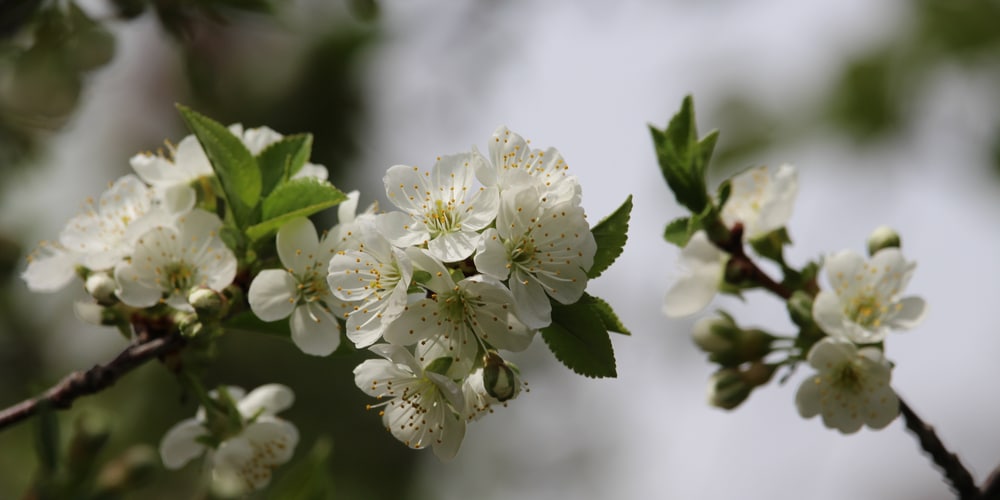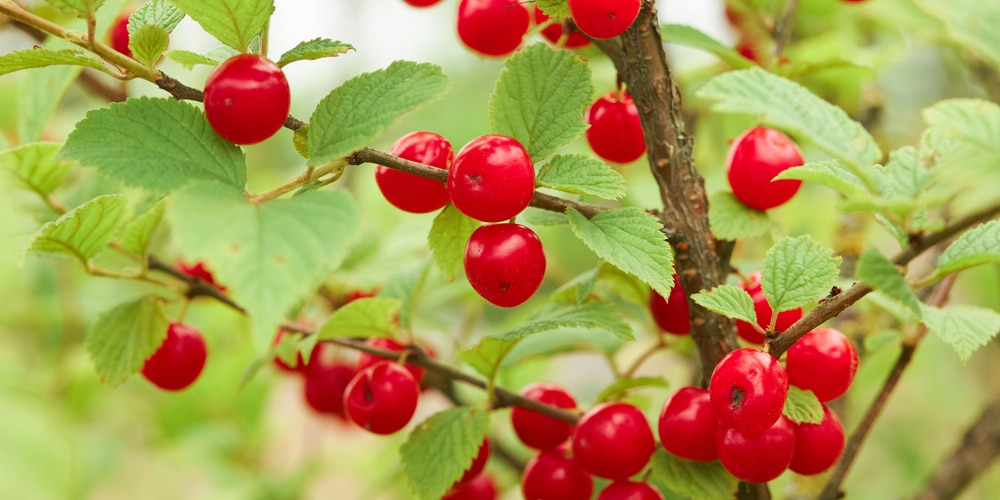Sakura, or cherry blossoms, is one thing to look forward to in spring. Everywhere you go, the bright light pink flowers of the cherry tree will easily catch your attention. When summer comes, these flowers will turn into delicious sweet and sour cherries that you can enjoy in many ways.
Cherries are popular and abundant in the northern part of the United States, where they receive the cool winter months that they require in order to bloom in spring.

Does this mean you can’t enjoy the beautiful sight of cherry trees in the southern region of the USA? If you’re looking for cherry tree zone 9, you’ve landed on the right page! Here we’ll talk about the possibility of growing cherry trees in USDA hardiness zone 9.
Can you grow cherries in USDA hardiness zone 9?
Regions classified under USDA hardiness zone 9 have a minimum average temperature of 20 degrees F to 30 degrees F. When a plant variety is considered hardy to zone 9, that plant will grow even with a 20-degree F temperature in the winter. This temperature will not cause any damage to the plant.
The states of Florida, California, Oregon, Washington, Hawaii, Georgia, South Carolina, Louisiana, and Utah are all under the USDA hardiness zone 9. Knowing these states, you can already tell that zone 9 experiences mild temperatures. This zone also has mildly low temperatures in winter but has long, hot summers, which results in a longer growing season.
It is more likely to find cherries in the northern part of the US than in the southern region. You know very well that cherries love cool climates, even though they need 8 hours of sunlight per day.
The sunlight requirement is not an issue because zone 9 receives a lot of sunlight. Cherries grow well in USDA hardiness zones 5 to 7. This isn’t a problem because if cherries can withstand a winter temperature of 10 degrees F, then they can also withstand a temperature of 20 degrees F. But the main problem is the chill hours.
Sweet cherries require 700 to 800 chill hours in the winter to blossom in the spring, while sour cherries require 1,200 chill hours. Zone 9 cannot provide thess chill hours because it only receives 100 to 500 chill hours in the winter.
But don’t lose hope, cherry lovers! You can still grow cherries in Zone 9 with the right cherry tree cultivar. Find cherry tree varieties with short chilling periods. Since Zone 9 can only provide up to 500 chilling hours, which is approximately 20 days, find cherry trees that require less than 500 chilling hours.
This also means giving up on sour cherries because they will not bloom and bear fruit given that they require a longer winter. Go with the sweet cherry cultivars because they grow in USDA zones 5 through 9. Sweet cherry cultivars are heat-loving cherries that require shorter chilling periods and, therefore, will grow well in the southern region of the USA.
Cherry varieties that grow well in USDA hardiness zone 9
Consider yourself lucky. This article will not only give you hope that you can grow your own cherry, but it will also give you specific cherry cultivars that you can grow if your yard or garden is in USDA hardiness zone 9.
We’ve mentioned earlier that sweet cherries are your only hope. Unlike sour cherries that are self-fertile, most sweet cherry trees require another variety of sweet cherry so that they will cross-polinate. Here are some sweet cherries that you can grow in USDA Zone 9.
1. Lapins
If you’re looking for the best cherry variety that will definitely grow well in USDA Zone 9, then go for the sweet cherry Lapins. This cherry tree is self-fertile, unlike most of the sweet cherries that need another tree to produce fruit, which means you only need one Lapins cherry tree in order to have sweet cherries in late July.
You can also trim the tree if you have limited space in your garden. Lapins only require chilling hours as low as 400 hours, which Zone 9 can easily provide.
2. Stella
Another small and self-fertile cherry tree that can also grow in USDA Zone 9 is the Stella cherry tree. The minimum chill hours for the Stella cherry tree to bloom flowers in the spring is 400 hours.
This cherry tree produces white flowers in the spring, which will then turn into dark red, juicy sweet cherries in the summer. Stella can tolerate shade but will bear more fruit when it receives at least 6 hours of direct sunlight each day. If you have limited space in your garden, you can choose the semi-dwarf variety that can grow up to 18 feet tall only.
3. Royal Lee
The Royal Lee cherry tree demands the lowest chilling hours in the winter, which is 300 hours. If you live in a region that only gets 12 days with temperatures of 45 degrees F or below, then Royal Lee is your only hope of having cherries in your garden.
This cherry tree can even tolerate 200 chill hours and can grow even in USDA Zone 10. However, this cherry tree is not fertile and is best paired with Minnie Royal to assist pollination.
4. Royal Rainier
Royal Rainier only requires 400 chill hours. This cultivar grows well in USDA zones 5 through 9. However, Royal Rainier is not self-fertile and you have to pair this tree with either Lapins, Bing, or Black Tartarian for it to produce fruits. The fruits are large yellow cherries with a red blush, which is not very common among cherries.
You can enjoy beautiful cherry blossoms and sweet cherries in Zone 9 with low chill cherries such as Lapins, Stella, Royal Lee, and Royal Rainier. But remember that chill hours is just one of the growth requirements for cherries.
Zone 9 is known for having hot summers, so make sure that the cherry tree can also withstand high temperatures. To conclude, growing cherries in Zone 9 is not an impossible dream. You can also get to witness the beautiful Sakura in the southern region of the USA.

